Acer Chromebook Spin 513 review: Cheap and mostly cheerful
An affordable Chromebook convertible with good looks but mediocre performance
-
+
Stylish, sleek exterior
-
+
Reasonable screen quality
-
+
Good battery life
-
+
Affordable
-
-
Underwhelming Snapdragon SoC
-
-
Middling build quality
-
-
Poor connectivity

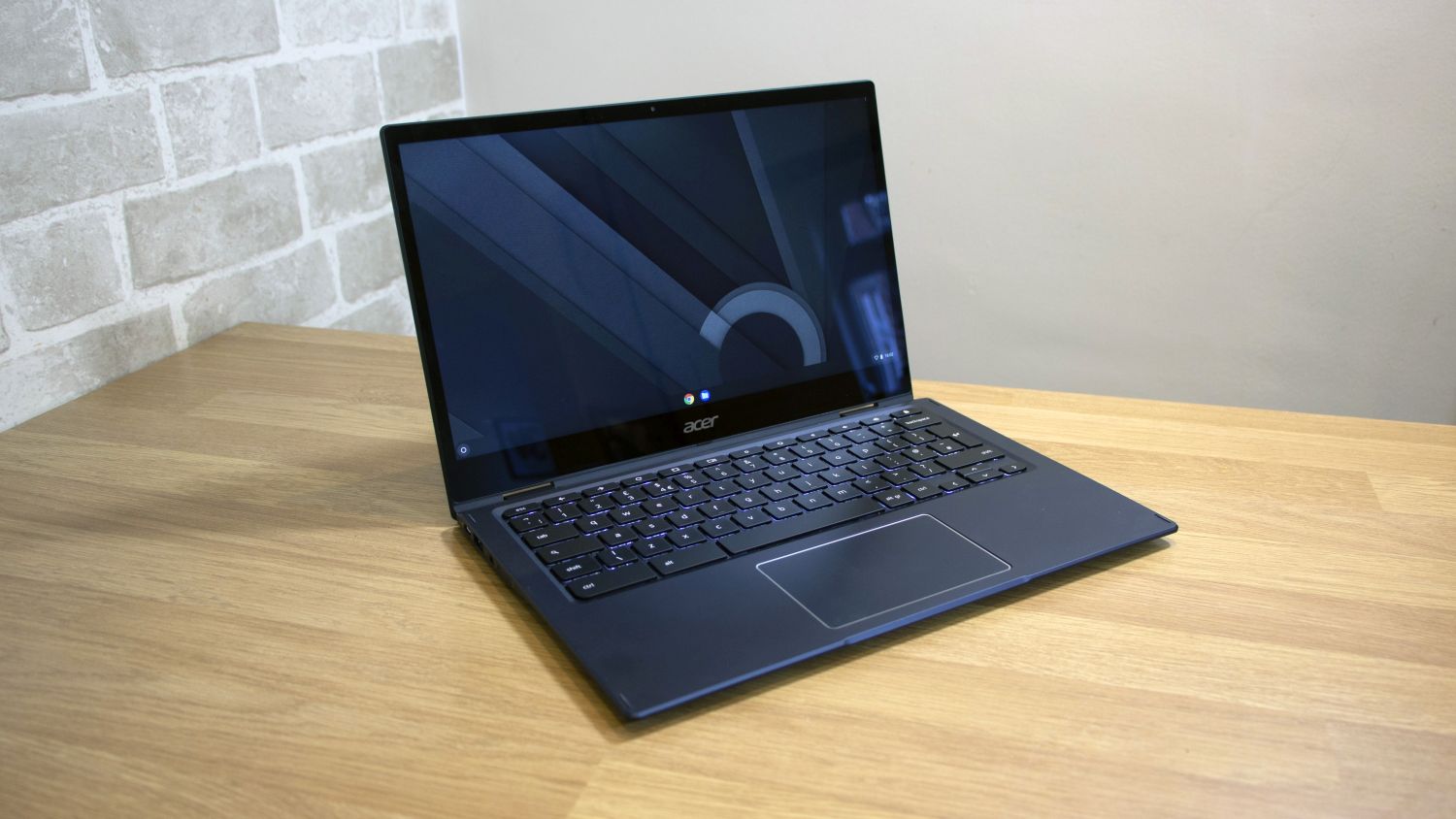
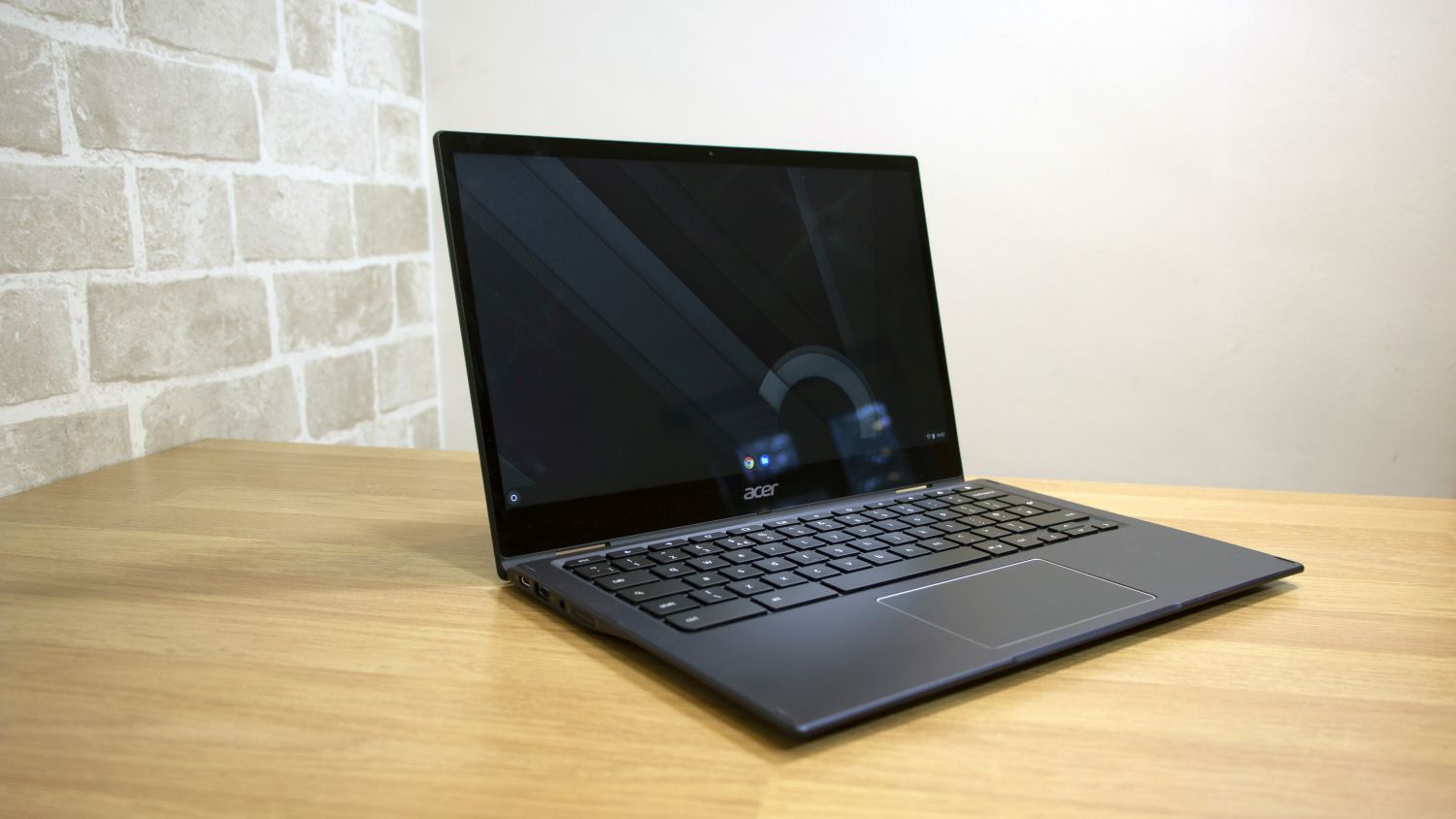
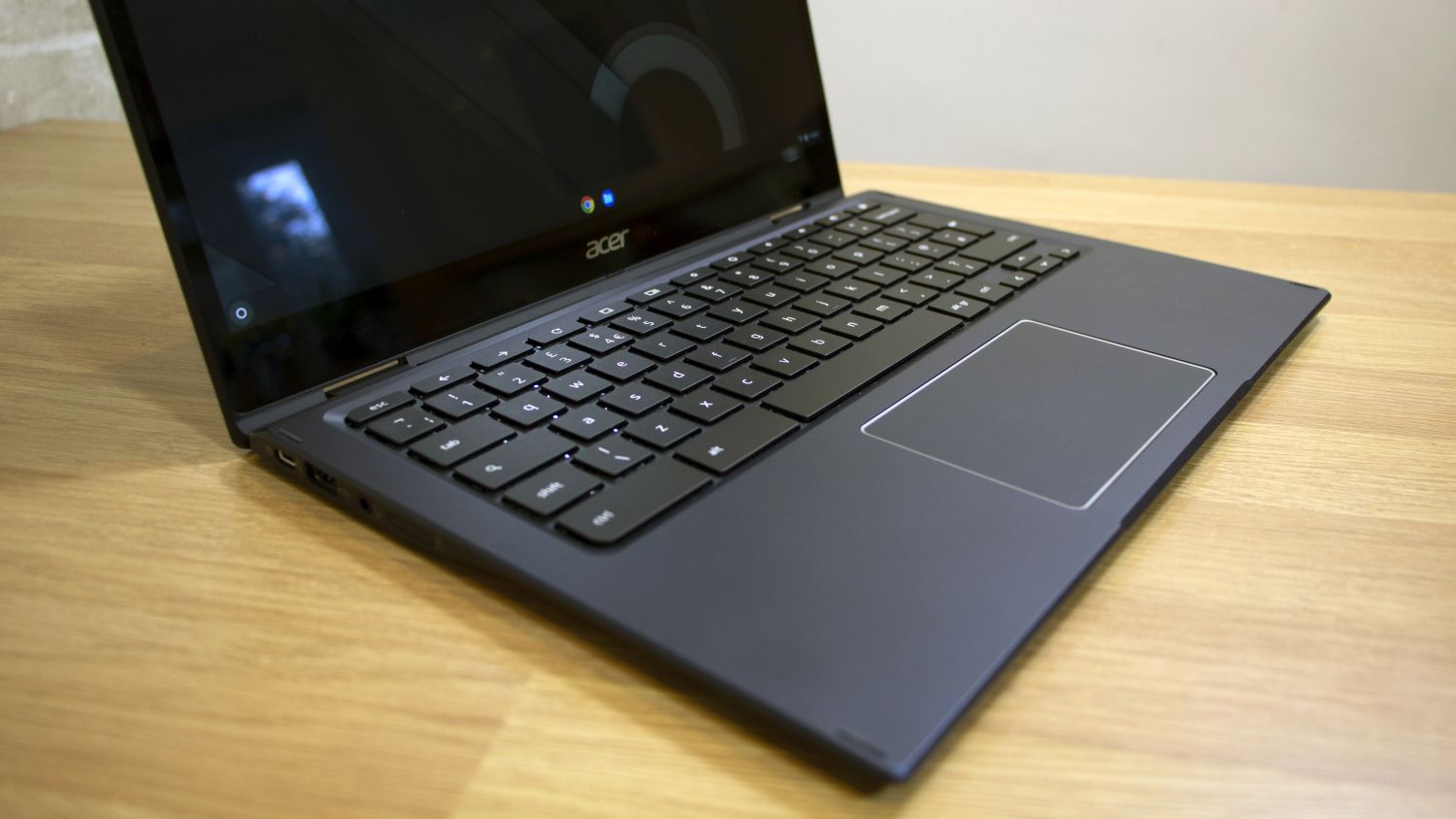
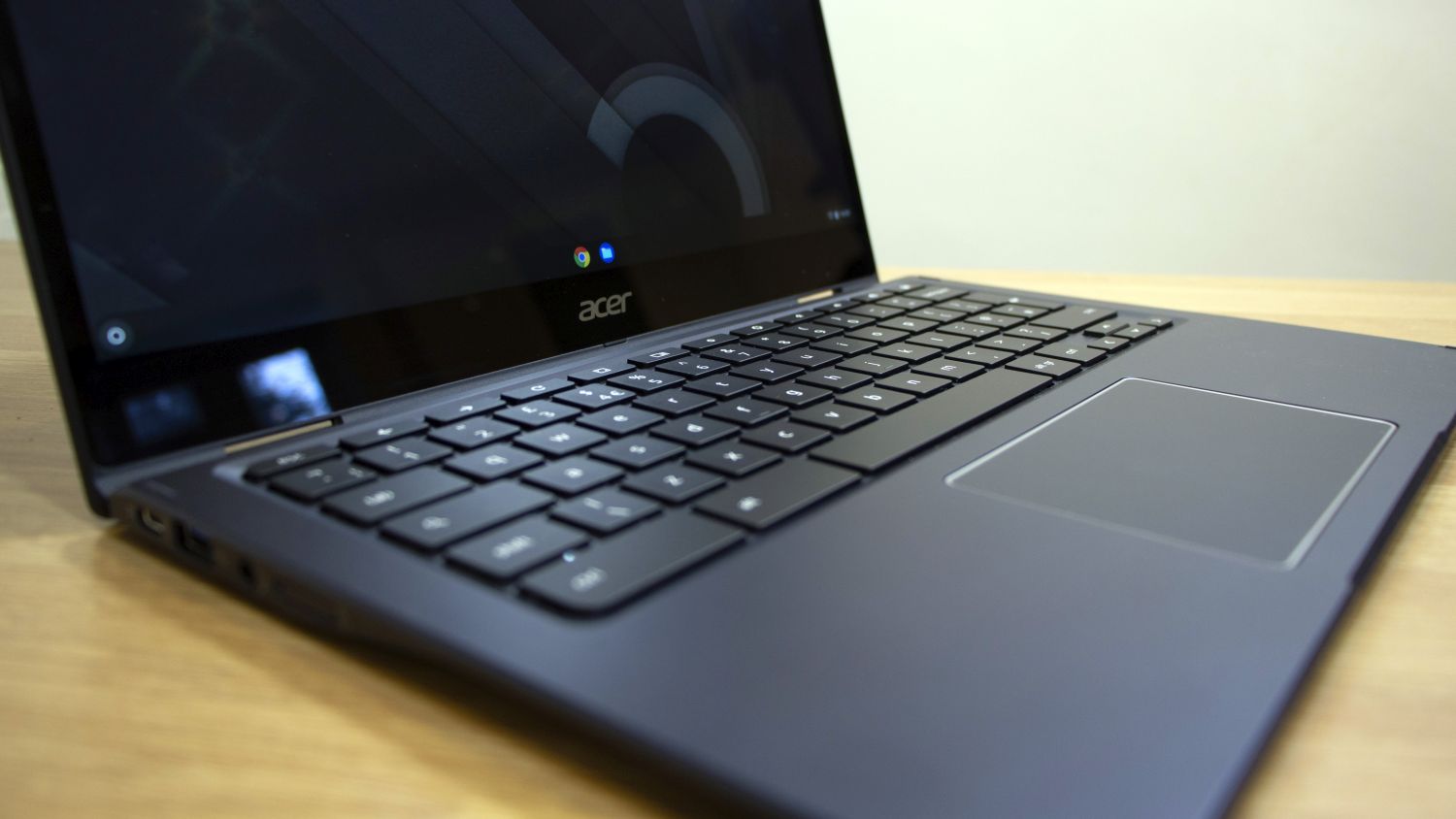
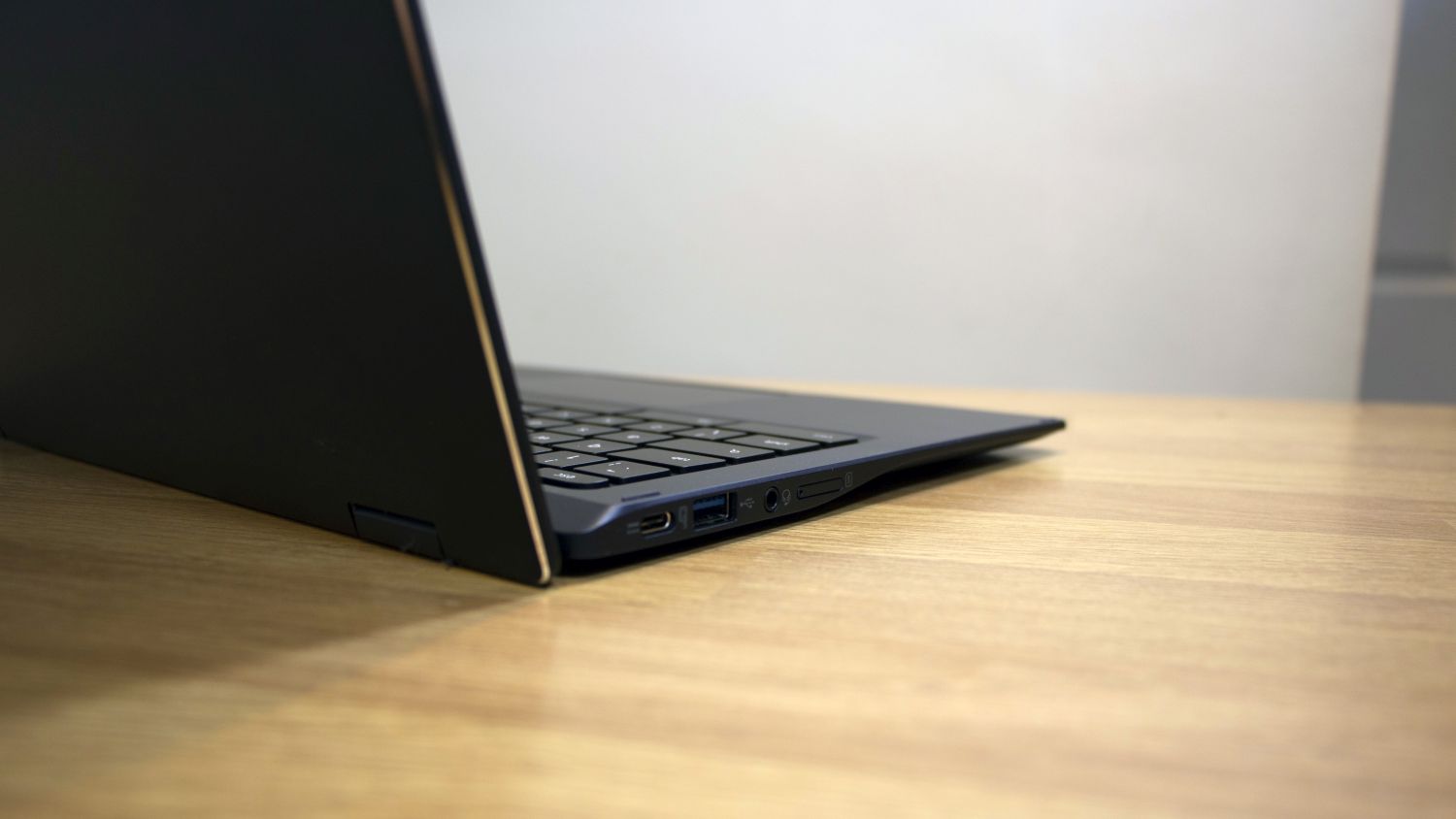
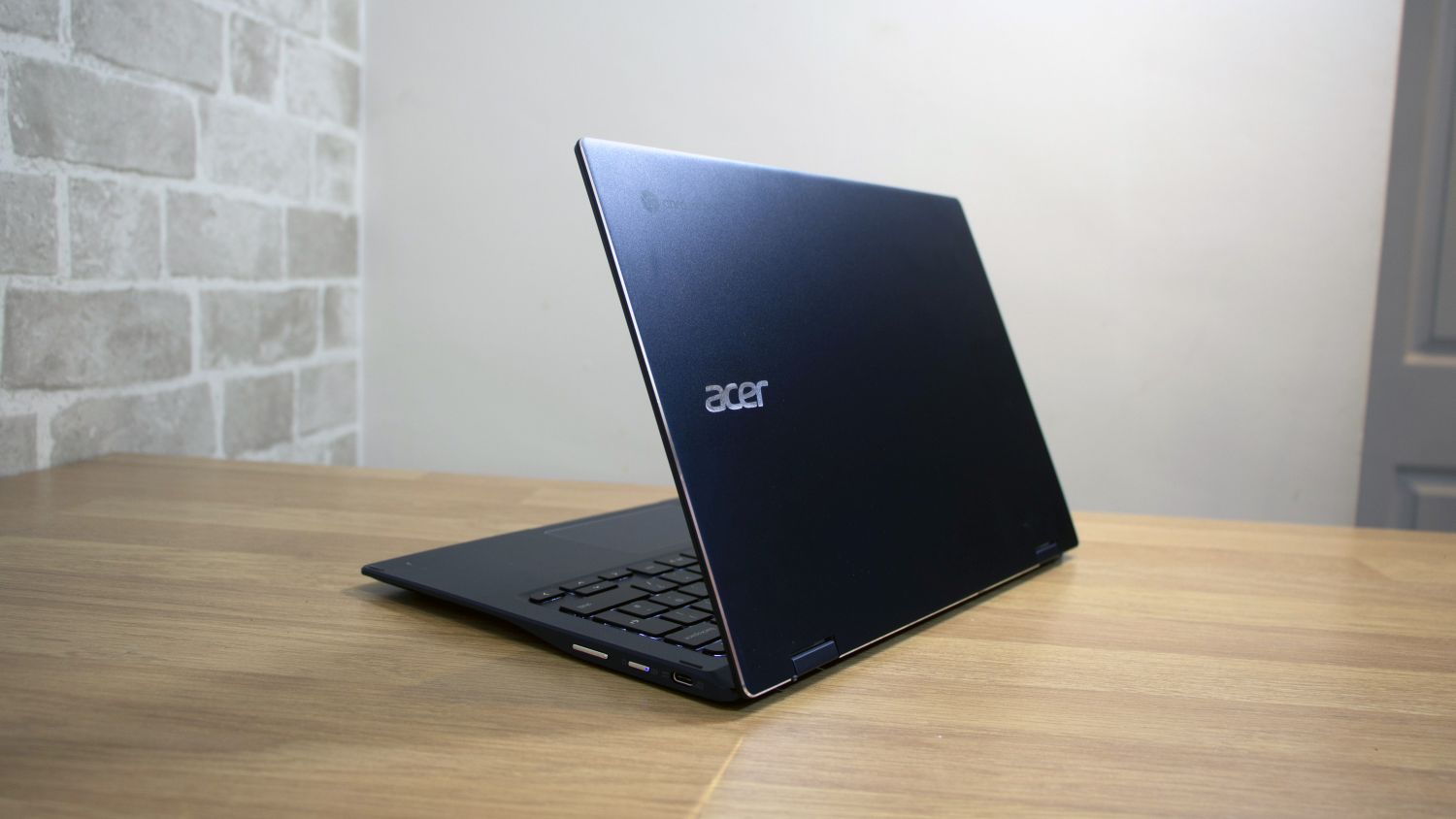
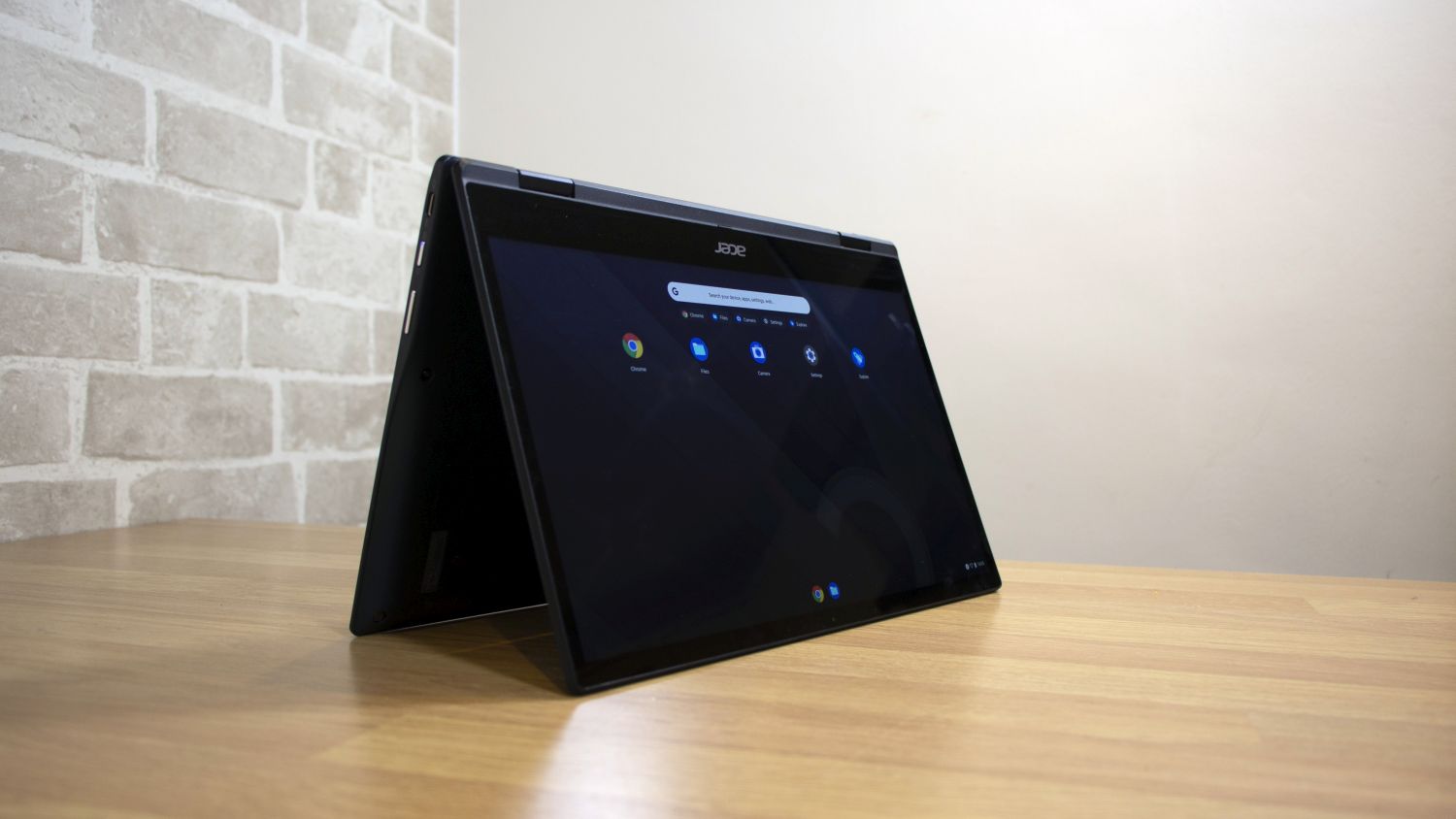
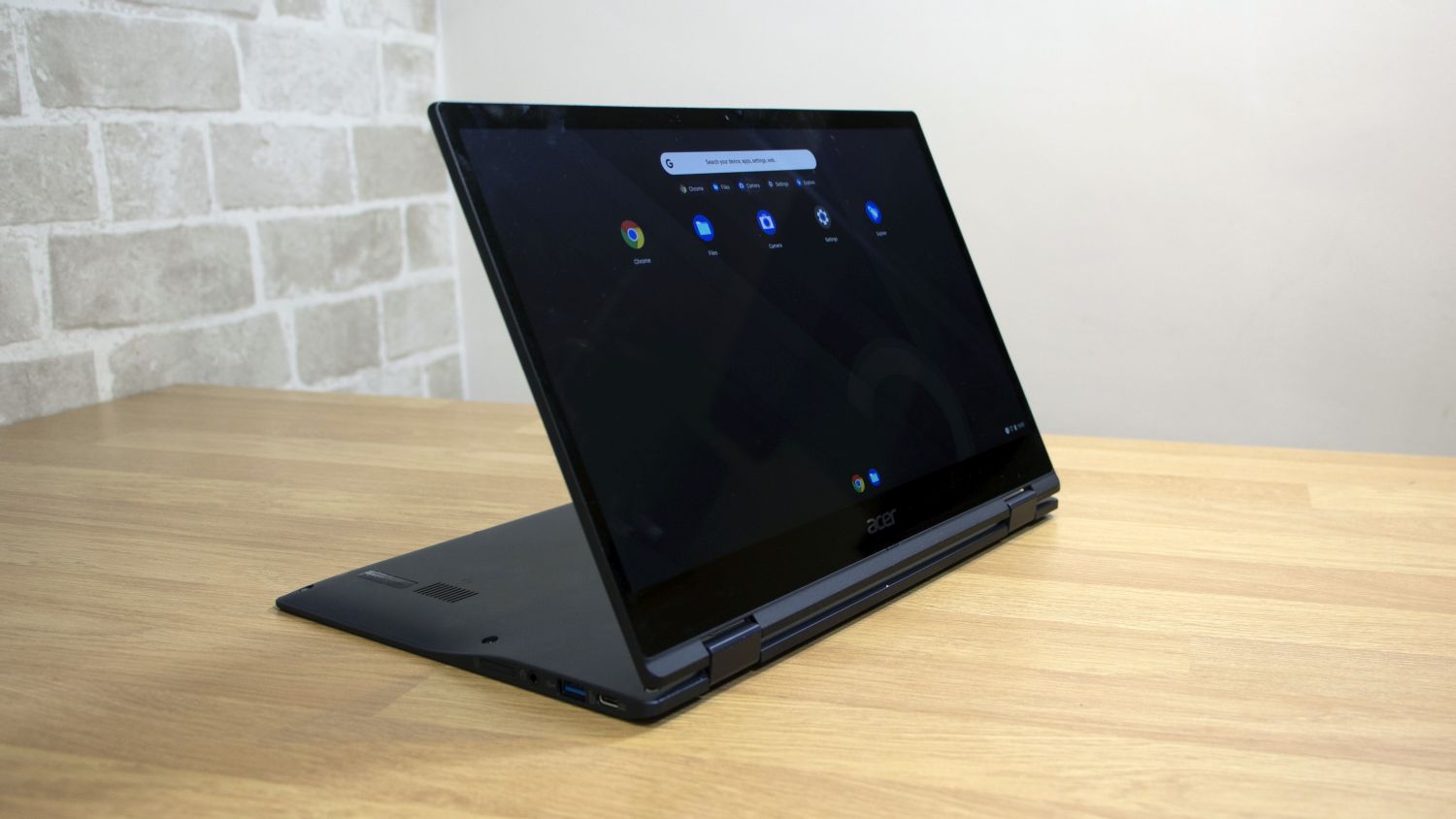
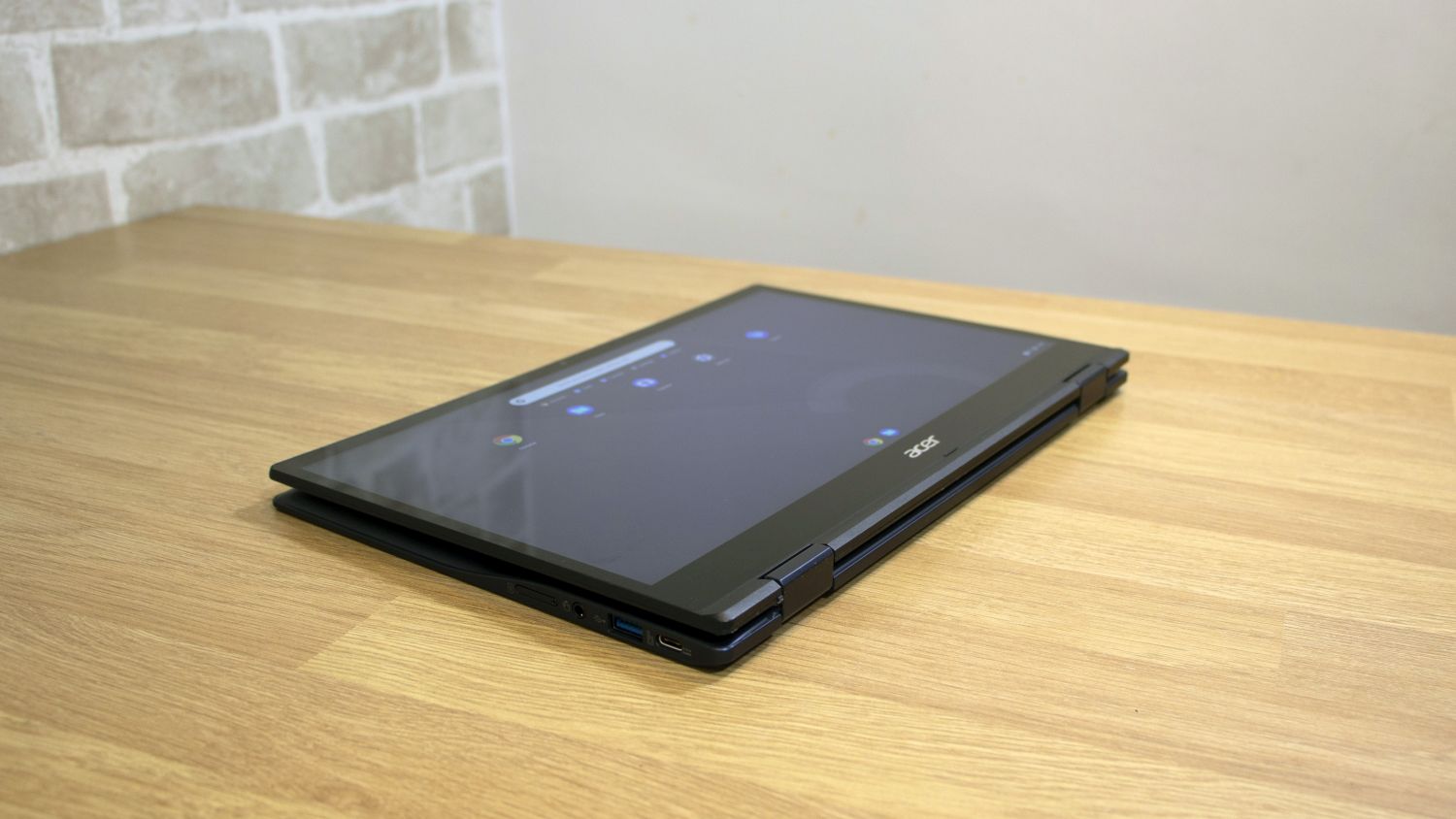
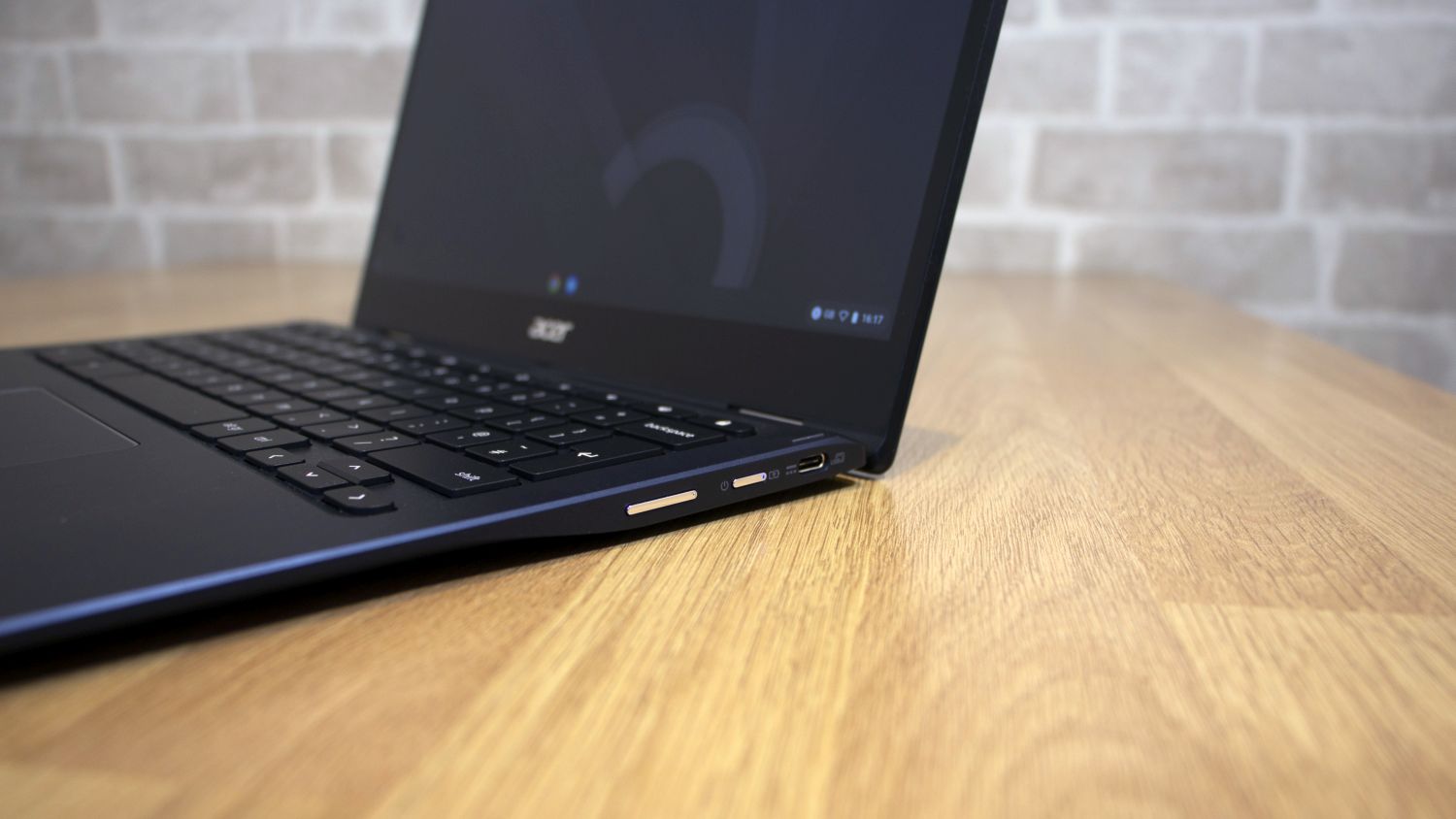
The Acer Chromebook Spin 513 is a Google-powered hybrid that only costs £332 exc VAT. That makes it one of the cheapest Chrome OS machines around, and it’s ideal if you want browser-based computing without spending loads of cash.
At this price, though, there’s always the chance that too much has been compromised to cut costs – so we’re always wary when affordable models arrive on the test-bench.
Acer Chromebook Spin 513 review: Design
Acer’s machine addressed our fears with an impressive design – the Spin looks more luxurious than its £332 exc VAT price tag suggests. A deep blue matte finish coats its external surfaces, and the lid and trackpad have slick chrome-effect bevelled edges.
The dropped hinge enhances the slick aesthetic, and smooth hinge movement makes it easy to swing this device into tent or tablet modes. And, with a weight of 1.2kg and a body that’s just 15.5mm thick, the Spin is never cumbersome.
The Spin is slimmer and lighter than the pricier Lenovo IdeaPad Flex 5, and it undercuts Acer’s own Spin 713. It even compares well with the tiny, bargain-basement Asus Chromebook CX1, although that 11.6in notebook is narrower than the Acer.

There’s only one issue when it comes to design: the Spin’s build quality. If you press on the rear of the display there’s noticeable desktop distortion, and the base is easy to flex. A protective sleeve will fix the issue and it’s no surprise that this sub-£400 notebook feels a bit flimsy, but it’s still disappointing given the premium aesthetic.
Acer Chromebook Spin 513 review: Keyboard and trackpad
The lack of robust design is apparent on the keyboard, too – typing is a bouncy experience, and the keys feel light. The dainty buttons are still good enough to handle day-long typing sessions though, and elsewhere the Spin has the conventional Chromebook layout, with a Search button on the left-hand side and clear symbols on the function row. It’s backlit, too, and the power button is helpfully shunted to the laptop’s right-hand edge, so you won’t accidentally hit it while typing.
Unsurprisingly, the rival IdeaPad has a better keyboard, but there’s little to choose between the 513 and its more expensive Spin stablemate. This keyboard is also far better than the typing gear inside the cheap Asus CX1.
The trackpad, meanwhile, has perfect gesture tracking and an accurate surface, and the slightly soft buttons don’t prevent it from being perfectly usable.
Acer Chromebook Spin 513 review: Display
Above the keyboard you’ll find a 13.3in IPS touchscreen with a 1,920 x 1,080 resolution. That figure is fine for ordinary work, but this affordable machine returned middling quality levels.

The panel’s contrast ratio of 1,038:1 is high enough to ensure decent depth and punch, and the screen’s Delta E of 2.45 is good enough for anyone bar professional designers. The colour temperature of 7,342K brings a slight pallid tone to the panel, though, and the display only rendered a middling 77.4% of the sRGB colour space. Meanwhile, the brightness level of 301cd/m2 is only good enough for indoor use, and the panel has an extremely glossy finish that proves irritating if you do lots of work beneath bright lights.
The Spin’s contrast and resolution ensure that the display can handle commonplace work, but if you do want a wider and more accurate colour gamut for tougher creative workloads, the Lenovo and Spin 713 are both far better – and the latter has a higher resolution and brighter backlight.
Acer Chromebook Spin 513 review: Hardware and performance
The Spin 513 also struggles to compete with its rivals on the inside, too. This notebook deploys a Qualcomm Snapdragon 7c with eight cores and a 2.4GHz clock speed, and the SoC sits alongside 4GB of memory and a 64GB SSD.
That moderate hardware returned scores of 592 and 1,674 in Geekbench’s single- and multi-core benchmarks, and both results are comfortably slower than the Lenovo IdeaPad and the Acer Spin 713 – the former with an Intel Core i5 processor and the latter relying on Core i3 silicon. Indeed, the Spin 513 was only able to outpace the Asus CX1’s feeble Celeron chip.
Those benchmark results may not impress, but in fairness, the Acer can manage everyday tasks well enough. We tested the machine with simultaneous Office apps, media players, social media sites and email clients, and the Spin didn’t show any sluggishness.

That’s quite clearly the 513’s limit, though – it was noticeably slower when we tried some photo-editing, and its 64GB SSD will quickly fill if you want to tackle creative tasks or install loads of extra apps.
Acer produces a version of this device with 8GB of memory and a 128GB SSD, but that costs £416 exc VAT and it relies on the same processor, so it still won’t be able to cope with tougher workloads. If you do need that kind of power, the Intel and AMD processors used elsewhere are far more capable, even if they’re a bit more expensive.
Battery life is more encouraging however, and in our 170cd/m2 video playback test, the Acer lasted for 12hrs 25mins - the equal of the Spin 713 and slightly ahead of the Lenovo and Asus CX1 devices.That’s a good result for a low-cost Chromebook, and you’ll be able to get through a day of work with this machine. And even though that figure declines slightly if you push the hardware and run the screen at full brightness, you’ll still see ten hours of life.
Acer Chromebook Spin 513 review: Ports and features
The Spin has two USB 3.2 Gen 1 Type-C ports - one on either side - which both support DisplayPort, and can charge the device. The left-hand edge has a full-size USB port, and the right-hand side has the power button and volume rocker. Interestingly, the left-hand edge has a SIM card slot – although this more affordable 513 only supports 3G SIM cards. If you want 4G, you’ll need the £416 exc VAT version.
That physical connectivity can match any competitor, and the SIM slot is a welcome addition, but beyond this the Acer disappoints. It’s got dual-band 802.11ac wireless and Bluetooth 5, but faster Wi-Fi 6 is more common. The 513 has no HDMI, no microSD slot, and no fingerprint reader. There’s no Kensington Lock slot, and the 720p webcam has no facial recognition and no privacy shutter. The speakers are fine for background noise and basic media, but they’re tinny and weedy.

The Lenovo and Spin 713 both have better internal connectivity. Lenovo’s IdeaPad also has a webcam privacy shutter, an HDMI output, an SD card reader, and even a fingerprint reader on some models. Impressively though, the Spin will receive automatic updates from Google until June 2029.
Acer Chromebook Spin 513 review: Verdict
The Acer Chromebook Spin 513 looks superb, and it’s thinner, lighter, and thriftier than its rivals. It’s got a reasonable screen, components that can deal with everyday tasks, and all-day battery life. It easily switches position, and it’s worthwhile if you want an inexpensive and compact hybrid for all-day working – even if it does falter when it comes to build quality and connectivity.
If you want to go beyond those tasks, though, we wouldn’t recommend the Spin 513. Instead, consider the Spin 713 and Lenovo IdeaPad – they cost a bit more, but they’ve got much more power and better screens.
Acer Chromebook Spin 513 Specifications
| Processor | 2.4GHz octa-core Qualcomm Snapdragon 7c |
| RAM | 4GB LPDDR4 |
| Graphics | Adreno 618 |
| Storage | 64GB SSD |
| Display | 13.3in 1,920 x 1,280 touch IPS |
| Operating system | Chrome OS |
| Connectivity | Dual-band 802.11ac WiFi, Bluetooth 5 |
| Ports | 2 x USB 3.2 Gen 1 Type-C/Power delivery/DisplayPort, 1 x USB 3.2 Gen 1, 1 x audio |
| Dimensions | 310 x 209 x 15.5mm (WxDxH) |
| Weight | 1.2kg |
| Warranty | 1yr RTB |
Get the ITPro daily newsletter
Sign up today and you will receive a free copy of our Future Focus 2025 report - the leading guidance on AI, cybersecurity and other IT challenges as per 700+ senior executives
Mike Jennings has worked as a technology journalist for more than a decade and has been fascinated by computers since childhood, when he spent far too long building terrible websites. He loves desktop PCs, components, laptops and anything to do with the latest hardware.
Mike worked as a staff writer at PC Pro magazine in London for seven years, and during that time wrote for a variety of other tech titles, including Custom PC, Micro Mart and Computer Shopper. Since 2013, he’s been a freelance tech writer, and writes regularly for titles like Wired, TechRadar, Stuff, TechSpot, IT Pro, TrustedReviews and TechAdvisor. He still loves tech and covers everything from the latest business hardware and software to high-end gaming gear, and you’ll find him on plenty of sites writing reviews, features and guides on a vast range of topics.
You can email Mike at mike@mike-jennings.net, or find him on Twitter at @mikejjennings
-
 ‘Phishing kits are a force multiplier': Cheap cyber crime kits can be bought on the dark web for less than $25 – and experts warn it’s lowering the barrier of entry for amateur hackers
‘Phishing kits are a force multiplier': Cheap cyber crime kits can be bought on the dark web for less than $25 – and experts warn it’s lowering the barrier of entry for amateur hackersNews Research from NordVPN shows phishing kits are now widely available on the dark web and via messaging apps like Telegram, and are often selling for less than $25.
By Emma Woollacott Published
-
 Redis unveils new tools for developers working on AI applications
Redis unveils new tools for developers working on AI applicationsNews Redis has announced new tools aimed at making it easier for AI developers to build applications and optimize large language model (LLM) outputs.
By Ross Kelly Published
-
 Google layoffs continue with "hundreds" cut from Chrome, Android, and Pixel teams
Google layoffs continue with "hundreds" cut from Chrome, Android, and Pixel teamsNews The tech giant's efficiency drive enters a third year with devices teams the latest target
By Bobby Hellard Published